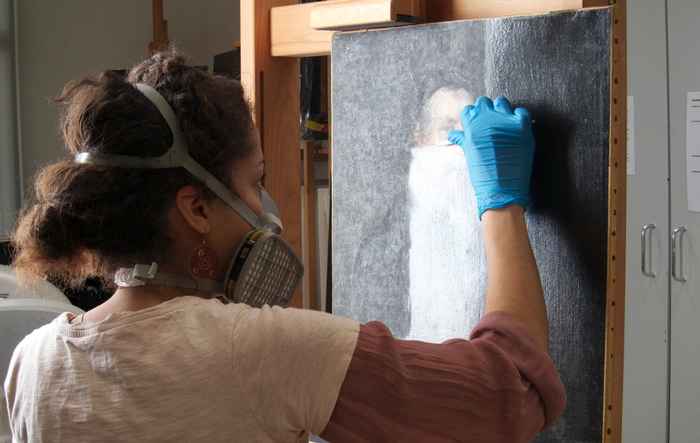Paintings

Paintings conservation in perspective
The importance of paintings in societies has promoted the rise of the discipline, Conservation and Restoration of Cultural Heritage, to an academic level. Significant academic research has already been carried out in the field of paintings conservation. This implies that students in the specialisation can rely on an extensive body of knowledge on historical painting techniques, degradation phenomena and causes as well as and the likely consequences of certain conservation treatments. Furthermore, research in innovative conservation treatment is well represented in professional literature. Research is vital since the material diversity and multi-layerstructure of paintings makes them complex objects and each conservation decision affects the individual materials and their combinations in different ways.
Paintings conservation: The full treatment
The conservation issues that the students may encounter after graduation are diverse and each painting gives rise to different complications. As it is not possible to teach a solution for each situation, the programme emphasises the acquisition of methodical approach.
To foster an in-depth development of their knowledge and skills, students carry out full treatments of a painting. Before students begin such a treatment, the condition of the painting is diagnosed. The physical condition of the painting as well as the previous treatment history and art historical context of the painting are mapped out. In addition, the painting is not simply regarded as an isolated object: its spatial and historical contexts (e.g. whether it is part of an ensemble, its particular location) play an important role. The theory regarding treatments is presented in workshops combining theory and practice. Treatments may include removing surface dirt, old varnish and retouches as well as consolidating loose components of the painting and the visual reintegration of lacuna.
While learning and working, students gain practical experience, develop their manual dexterity and learn to use research techniques such as microscopy and wet-chemical tests to support treatment decisions.